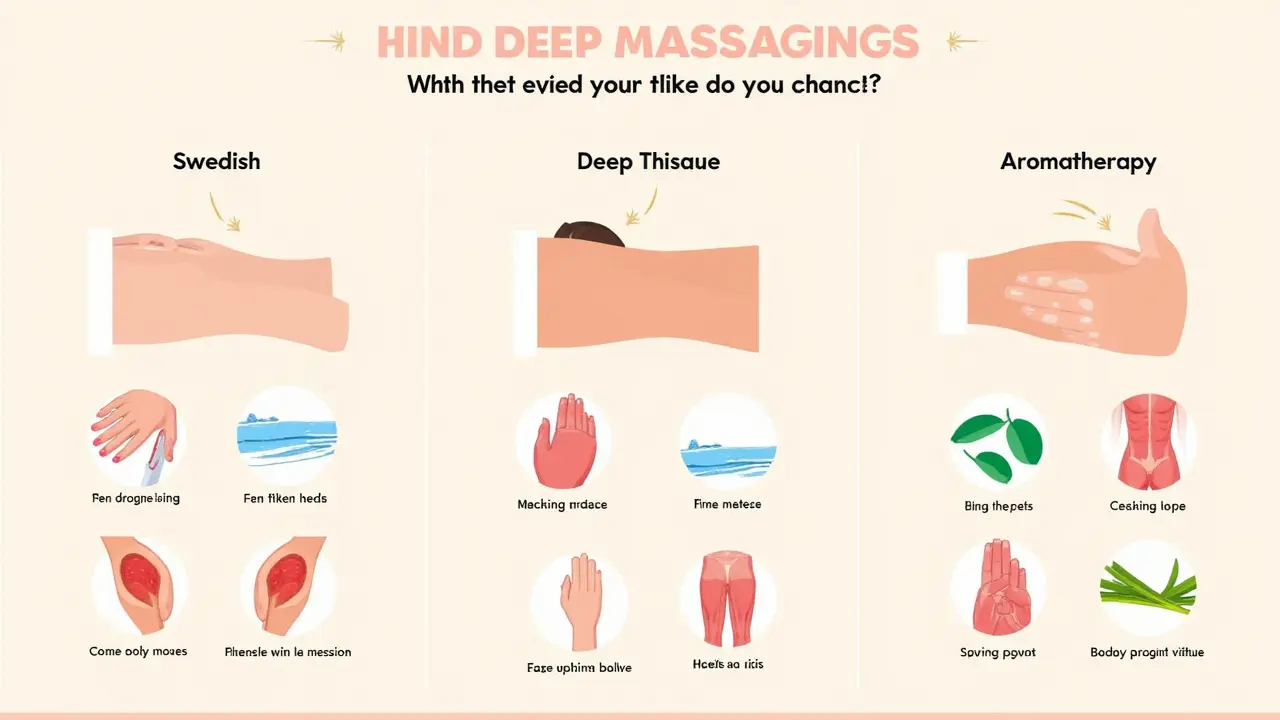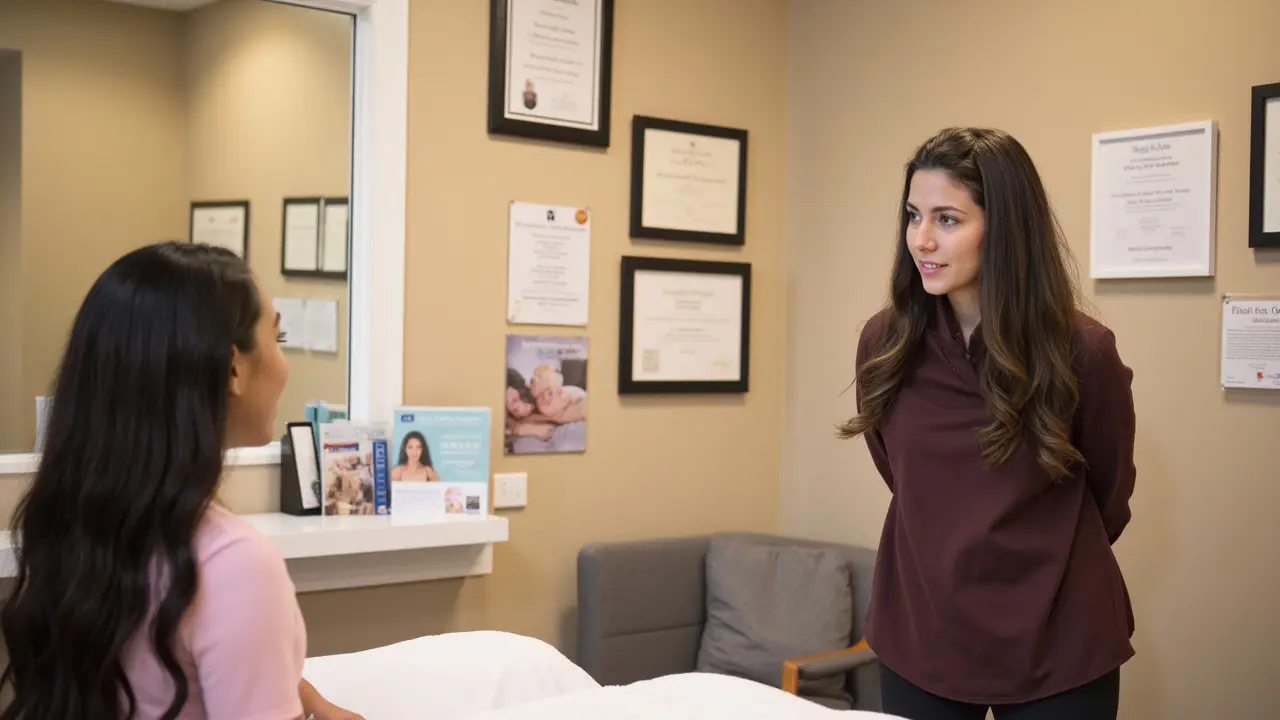Ever drag yourself home after a rough day and wish you could hit ‘reset’ on your muscles and mind? That’s where a body massage comes in—a fast track to letting go, loosening up, and feeling like you again.
Body massages aren’t just for pampering; they target real daily problems like aching shoulders or a stiff neck from bad posture. No idea which massage actually helps? Don’t sweat it. There’s more than one way to get the knots out, and you don’t need to know all the fancy names to start feeling better.
Let’s keep it straight: a good massage session means you walk out lighter, sleep better, and sometimes even feel like you hit the ‘undo’ button on stress. Whether you hang around your neighborhood or hunt for a spa across town, there are practical ways to get a great massage that fits your budget and vibe.
- Key Points
- Direct Answer
- Comprehensive Guide to Body Massage
- Types of Body Massage
- What to Expect During Your Session
Key Points
If you're looking for the big takeaways on body massage, here’s what matters right away:
- A body massage isn’t just about relaxing—it can help with muscle pain, headaches, and even sleep issues.
- Professional massages use proven techniques like Swedish, deep tissue, and sports massage to target different needs.
- Research shows regular sessions can lower stress hormones by up to 30% and boost mood-boosting chemicals like serotonin.
- Most spas and clinics now put safety first with clean rooms, experienced therapists, and clear communication about your needs or health conditions.
- Prices can vary from $40 for a quick session to around $120 for a full hour at an upscale spot, with plenty of deals in between.
Check out some quick numbers on benefits and costs:
| Fact | Details |
|---|---|
| Average Stress Reduction | Up to 30% drop in cortisol |
| Common Session Length | 30, 60, or 90 minutes |
| Cost Range (USD) | $40 to $120 |
| Mood Improvement | Boosts serotonin and dopamine levels |
Bottom line? You’re not just getting a break—you’re giving your health some real backup. And it’s easier to get started than most folks think.
Direct Answer
If you want the short version—getting a body massage is an effective way to melt away stress, ease muscle pain, and reboot your mood, all in about 60 minutes. Good spas and therapists use simple techniques, from gentle Swedish strokes to deep tissue work, that are actually backed by research. A 2024 clinical review showed massage therapy reduces muscle tension and lowers anxiety for most adults.
Here’s what you really get out of a session:
- Noticeable relief from back or neck pain—in fact, over 70% of chronic pain sufferers report feeling better after consistent massages.
- Improved sleep, especially for folks who toss and turn at night. There’s real science showing regular massage helps with insomnia.
- Faster recovery after workouts, thanks to increased blood flow and less muscle stiffness.
- A quick break from stress—some people say it feels like hitting “pause” on everyday problems.
You can book a session in most cities, and you’ll find options at local spas, gyms, and even some physical therapy clinics. Sessions typically last 30 to 90 minutes. Prices change based on location and type, but the average body massage in the US runs about $70 an hour (see handy price table below).
| Type | Average Price (USD) | Session Length |
|---|---|---|
| Swedish Massage | $60 - $100 | 60 min |
| Deep Tissue Massage | $70 - $120 | 60 min |
| Sports Massage | $80 - $130 | 60 min |
| Couple's Massage | $120 - $250 | 60 min (for two) |
The best part? You don’t have to be an expert to benefit. Just pick a trusted spot, let them handle the rest, and say goodbye to knots and tired muscles.

Comprehensive Guide to Body Massage
If you’re looking for a real break from stress, muscle tension, or even anxiety, a body massage is your go-to. We’re not just talking about feeling good for an hour—there’s actual science behind why massage helps.
Massage therapy boosts circulation and helps your body flush out built-up toxins. When your muscles get more blood flow, they loosen up faster. That’s why after a session, you start to notice you’re moving easier and even sleeping better.
A 2023 study from the American Massage Therapy Association showed 67% of people who got a massage reported better sleep and lower anxiety for days afterward. Massage even gets a nod from doctors for easing headaches and speeding recovery from tough workouts.
Here’s what a standard session usually covers:
- You’ll be asked about any pain or problem spots. A good therapist tailors your massage to what’s actually bugging you.
- Oil or lotion is almost always used (unless you have allergies), because it helps the therapist’s hands move smoothly.
- The session happens in a private, quiet room—think low lights and mellow music, so you don’t feel self-conscious.
Wondering if there are set rules or methods? It’s more flexible than you might think. Most therapists use a mix of techniques based on Swedish, deep tissue, or sports massage styles, depending on what you need.
Worried about catching germs or hygiene? Spas now follow strict cleaning rules—think sanitized tables, fresh linens, and hand washing after every client.
| Reason People Get Massages | Percentage |
|---|---|
| Relaxation & Stress Relief | 82% |
| Pain Management | 44% |
| Health/Medical Reasons | 25% |
Don’t be shy about asking questions, either. Therapists hear everything and are totally used to explaining the basics or helping folks feel at ease. If you’re nervous, saying so upfront makes the whole thing smoother.
If you want the best results, drink water before and after your massage—that helps your muscles and flushes out what your body releases. Booking regularly has real perks for folks with desk jobs, athletes, or anyone who lives with constant stress.
Types of Body Massage
Picking the right kind of body massage is like choosing your favorite pizza—you’ve got loads of options, and each one does something a bit different for your body. Here’s the lowdown on the most popular massage types you'll find at most spas and wellness centers.
- Swedish Massage: This is the one most people picture. The therapist uses long, gentle strokes, kneading, and circular movements. It’s a solid pick for newbies or anyone just wanting to unwind and chill out. Bonus: it’s known for helping with blood flow and easing muscle knots after a crazy week.
- Deep Tissue Massage: This isn’t for the faint-hearted. Deep tissue targets the deeper layers of muscle and connective tissue. If you deal with chronic pain or serious tension (think: desk job shoulders), this type can hit the spot.
- Sports Massage: Geared toward active folks and athletes, sports massage helps with muscle recovery, flexibility, and even prepping for or recovering from a workout or race. Therapists use a mix of techniques here, sometimes similar to Swedish but with more pressure in focused areas.
- Thai Massage: No oils, but plenty of stretching and movement. You stay fully clothed while the therapist guides your body into different positions, almost like assisted yoga. It’s great if you want to feel loose and limber afterward.
- Hot Stone Massage: Heated stones glide over your muscles, adding warmth to loosen up tight spots. It’s soothing and relaxing, especially in colder weather or if you’re carrying tension in your back and shoulders.
- Aromatherapy Massage: This one’s big on vibes. Essential oils are blended into the massage oil, so while your muscles get worked out, your mood can get a boost too. Lavender is common for stress-busting, while peppermint can wake you up.
There are other specialties out there, like reflexology (focusing on hands and feet) or prenatal massage for moms-to-be, but the list above covers what most people need for a first-time or routine spa visit.
When booking, don’t be shy—tell your therapist what hurts or what you want to get out of your session. They can steer you toward the right massage type or even mix a couple together to fit your needs.

What to Expect During Your Session
Walking into your first body massage session? Don’t worry—it’s way less awkward than it might seem. Most places start by asking about your comfort levels, any pain points, and if you have injuries or medical conditions. This info helps them tweak the massage just for you.
You’ll be shown to a private room, where you’ll either change into loose clothing or use a towel or sheet to cover up—nobody expects you to sit there fully exposed. There’s usually relaxing music and dim lights, and your therapist will check if you’re good before starting.
During the session, the therapist uses different strokes depending on what you asked for—light and relaxing, or firm and focused on tight spots. They use lotion or oil so there’s no tugging on your skin. If anything feels off, or the pressure isn’t right, just speak up. You’re in control the whole time.
Sessions usually last between 60 and 90 minutes. One study tracked heart rate changes and found stress levels dropped for most people after just 15 minutes of massage. Bet you didn’t expect that kind of quick impact!
- Stay hydrated—drink water before and after your massage.
- Show up a few minutes early so you can settle in.
- Don’t eat a big meal right before; a light snack works better.
- If you need to leave on time, let the therapist know before you start.
| Duration | What You Get | Avg. Price (USD) |
|---|---|---|
| 30 minutes | Quick focus (neck/shoulders or back) | $40-60 |
| 60 minutes | Full body, basic | $80-120 |
| 90 minutes | Full body, deep relaxation or deep tissue | $120-180 |
Those prices will bounce around depending on where you go and who does the massage, but most folks start with a 60-minute body massage for their first visit. Don’t forget to check with your provider about acceptability of tips—most therapists appreciate it!
